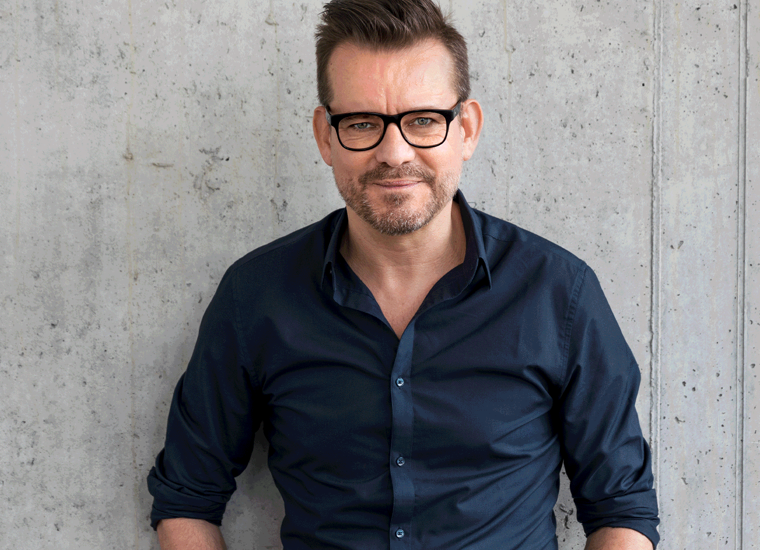The modern picture book's portal figure
Maurice Sendak (1928-2012) was an American author and illustrator. His major breakthrough was Where the Wild Things Are, published in 1963, where he all at once revolutionised the entire picture book narrative. It has been widely translated and read by generations of children all over the world.
 Photo: James Keyser
Photo: James KeyserQuick facts
The jury’s motivation
Maurice Sendak is the modern picture book's portal figure. He is unparalleled in developing the picture book's unique possibilities of narrating - to the joy of constant new picture book illustrators. Furthermore, he is one of the most courageous researchers of the most secret recesses of childhood - to the delight of constant new readers.
Sendak was born in a poor emigrant family from Poland. The Holocaust during World War II made a profound impression on his work. Maurice Sendak's major breakthrough was Where the Wild Things Are, 1963, where he all at once revolutionised the entire picture-book narrative. Unlike any other contemporary picture-book artist, he changed the entire landscape of the modern picture-book - thematically, aesthetically and psychologically. Primarily it is in the dozen or so books that Sendak both wrote and illustrated, where he penetrated the most secret recesses of childhood.
The visual expression of a child's inner landscape, which one meets already in Where the Wild Things Are, became Sendak's hallmark books such as In the Night Kitchen, 1970 and Outside Over There, 1981.
As an illustrator of other people's texts, e.g. of children's books by George MacDonald, Randall Jarrell and Meindert DeJong, Sendak demonstrated in a wonderful way how pictures can emphasize new meanings of a text.
Maurice Sendak passed away on May 8, 2012, at an age of 83 years.
A revolutionary of the entire picture book narrative
This text was written in 2003 by members of the award jury.
American author and illustrator, born in Brooklyn, New York on 10 June 1928, in a poor emigrant family from Poland. Many of Sendak's relatives died in the Holocaust during World War II, which made a profound impression on his work, especially in the pictorial language of, e.g. We Are All in the Dumps With Jack and Guy, 1993 and in Dear Mili, 1988, with the text written by Wilhelm Grimm.
Maurice Sendak's major breakthrough was Where the Wild Things Are, 1963, where he all at once revolutionised the entire picture book narrative. Referred to as the picture book of picture books, no study of modern children's literature has been able to ignore it. Having been translated into a great number of languages, many generations of children throughout the entire world have read the book. No picture book creator today can entirely escape Sendak's influence.
The dangerous journey young Max accomplishes to his inner aggressive demons in Where the Wild Things Are, is masterfully portrayed in a laconic text with pictures whose visual content, as well as their shifting sizes and formats, contribute to the narrative. The visual expression of a child's inner landscape, which one already meets in this book, became Sendak's hallmark even in In the Night Kitchen, 1970 and Outside Over There, 1981.
Sendak changed, unlike any other contemporary picture-book artist, the entire landscape of the modern picture book - thematically, aesthetically and psychologically. Primarily it is in the dozen or so books that Sendak both wrote and illustrated, where he penetrated the most secret recesses of childhood. He compared childhood to "a range of humiliation" which he happened to remember better than most other people do.
There is a picture of a moon watching over the children in nearly all Sendak's books. It is said to represent his overprotective mother. When he used to play outside as a young boy, his mother would peep through the window to be sure that he was safe. Such recurring pictures and symbols make Sendak's authorship unique and exciting. He said: "If I have an unusual talent, it's not that I draw particularly better, or write particularly better, than other people. I've never fooled myself about that. Rather, it's that I remember things that other people don't recall: the sounds and feelings and images - the emotional quality of particular moments in childhood."
As an illustrator of other people's texts, Sendak demonstrated in a wonderful way how pictures can emphasize new meanings of a text. His illustrations of the brother Grimms' stories capture an entire plot in one picture and add a special atmosphere as well. His illustrations of William Blake's poetry, or of children's books by George MacDonald, Randall Jarrell and Meindert DeJong have become classics in their own right. Furthermore, Sendak's sets for operas gave him the status of an artist of the highest order.
Sendak has been portrayed as a dramatist with his own small theatre, where short and headstrong stories of the most varied type are performed to music of Mozart. His choice of sets and actors for his pictures was stringent and he shaped them in a technique that was gently based on a tradition from Cruikshank, Tenniel, Caldecott, Busch and Nicholson. The basic set often had the character of a tapestry, behind which one heard brittle creaks from the stage machinery. His books, which have become classics, have withstood the wear that all eyes exert on his pictures.
Sendak received a spate of awards, including two Caldecott Medals (1964 and 1974) and the Hans Christian Andersen Medal from IBBY (1970).
If I have an unusual talent, it's not that I draw particularly better, or write particularly better, than other people. I've never fooled myself about that. Rather, it's that I remember things other people don't recall: the sounds and feelings and images - the emotional quality of particular moments in childhood.

Discover our laureates
The Astrid Lindgren Memorial Award is awarded to authors, illustrators and narrators, but also to people or organizations that work to promote reading.
Find out more about the laureates
Children have the right to great stories
To lose yourself in a story is to find yourself in the grip of an irresistible power. A power that provokes thought, unlocks language and allows the imagination to roam free. The Astrid Lindgren Memorial Award was created in 2002 by the Swedish government to promote every child’s right to great stories.
Find out more about the award